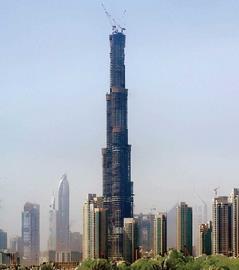Post 9/11 skyscraper codes unduly onerous and not thought through says CTBUH
Plans by the International Codes Council to insist on three stair cores in all high-rise buildings have not been properly thought out, says the Council on Tall Buildings and Urban Habitat (CTBUH).
Simon Lay, CTBUH fire engineering group chairman, is seriously questioning the proposed revisions to the 2009 International Building Codes (IBC), which would require all buildings over 128m high to have a minimum of three stairways.
The change is in response to US National Institute of Standards and Technology investigations into the events at the World Trade Center on 11 September 2001.
However, in a statement Lay said: “It is a measure which will most likely not improve life safety in tall buildings, and, if applied to many current or proposed schemes, would make them economically unviable and could devalue existing tall building stock.
“Current codes that require two stairs already provide a safe environment with regards to fire risks,” said Lay, who is director of fire engineering at WSP.
“The third stair is meant in response to terror threats. In this case, the best evacuation procedure is to use the lifts in conjunction with the stairs, and trials have proven it is a very effective way of evacuating a building quickly."
A secondary concern in terms of safety, but something high on developers’ minds, is the economic viability of adding stair cores.
“In large high-rise office schemes, adding a third stair core would reduce the net lettable space by up to 5%,” said Lay.
“And, in buildings with a square or rectangular footprint, to get the most benefit out of an additional core you’d have to push it out to the facade. This makes the core more susceptible to attack from outside and you lose a proportion of your most valuable lettable space.”
Another concern is the knock-on effect this code would have on existing high-rise building stock. Potential tenants may be less inclined to lease skyscrapers if they do not conform to new international building codes.
Source
Building Sustainable Design
Postscript
What do you think of the proposed revisions? Email: bsjeditorial @cmpi.biz






















No comments yet